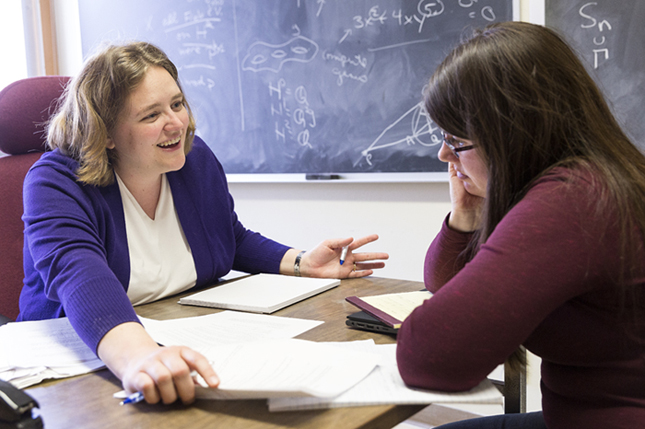
Please explain the work you do.
My job at UW-Madison involves research, teaching and outreach. In my research, I find solutions to math problems that no one else knows the answers to. These problems involve things like prime numbers (numbers like 2,3,5,7 whose only factors are 1 and themselves) and also different kinds of shapes and spaces. My work is basic science in that it helps us understand fundamental mathematical structures. These structures underlie many different things in our world, from how particles move in physics to the encryption that keeps all our digital data safe. I teach undergraduates and graduate students in courses, as well as mentor them in doing their own mathematics research. I am the assistant director of the Wisconsin Mathematics, Engineering and Science Talent Search, which is a program for high school students across the state of Wisconsin.
Tell us about your recent breakthroughs.
The bell curve is ubiquitous in all kinds of science. It turns out that this is not due to laws of nature as much as it a law of mathematics called the Central Limit Theorem — a mathematical result that says for any different kind of inputs, certain averages always come out shaped like a bell curve. This phenomenon is called universality, and it basically means no matter the input, the output will be the same. That is quite a powerful thing to know when you want to be able to predict outputs! One of my recent breakthroughs was to discover and prove a universality theorem for certain kind of symmetries. This says that no matter how certain objects are made, they will always have symmetries distributed in a kind of “symmetry bell curve.” Studying symmetries is one of the most central themes of mathematics, and so this has far and unexpected connections to everything from factoring integers to the statistical physics of avalanches.
Has being a woman working in math changed since you were the first female to compete for the U.S. Math Olympiad team?
One important new development has been the start of Research Collaboration Conferences for Women. These help a lot of women in mathematics expand their collaboration networks. There is then a snowball effect, because once you have connections in a new area, you are more likely to find further new collaborators (of any gender).
Are there any misperceptions about the work you do?
A lot of people have no idea that there are important math problems to which no one knows the answer, and hence do not understand the research component of my job. Often people think that the main part of my job is classroom teaching, even though I spend more time teaching out of the classroom than in, especially by mentoring undergraduate and graduate students in research, not to mention the time spent on my own research.
What keeps you going in your work?
Of course, it is always exciting to have a big breakthrough, but those often take years of work. Along the way, I enjoy working with other mathematicians and students on research.

